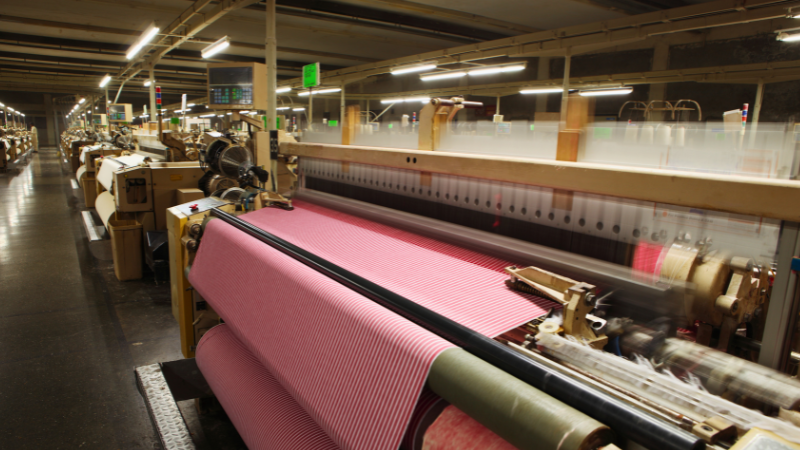
If you’ve ever wanted to know more about textiles, their distinctions from fabric and cloth or why they matter, then you’re in the right place.
This guide is for people who want to learn about textile, or for those who just want to know more about their fabric choices, as it will teach you the basics of textiles, help you tell apart textiles, fabrics and cloth and explain their role in your daily textile production.
Textiles Definition and Meaning
So, what does the word ‘textiles’ mean? Basically, textiles are made from fibers that are woven, knitted or Non-woven. The textile meaning is taken from the past participle of the Latin verb texere which means to weave.
Textiles are produced in textile manufacturing when other fibers such as cotton, silk and wool are made into yarn and woven to become the final product. Some textile arts are natural, for example cotton and wool and others are synthetic, for instance polyester and nylon.
We use fiber based materials for clothes, but they can also be made into rugs, towels and products for the medical field such as surgical gowns and bandages. Textile production is a huge industry that has affected modern life and it is now mostly based on synthetic textiles and fabrics for their strength and low cost. Today, the global economy greatly depends on the textile industry, which is valued at trillions of dollars.
What’s the Difference Between Textile, Fabric, and Cloth?
Although textile, fabric and cloth sound alike, they all have their own unique meanings. The table below explains the differences between them:
| Term | Definition | Usage Example |
|---|---|---|
| Textile | A general term used for everything from the beginning fibers to the final products. Cotton and wool are examples of textile fibers and fabrics woven or knitted from them are also part of textile materials. Textiles are applied in various sectors such as fashion and medical use in bandages. | Carpets, Apparel, Rope, Surgical Gowns |
| Fabric | The material called fabric is made by weaving, knitting or processing textile fibres. It is the finished product that is used in clothing or home decoration. The material you see and touch in jeans and towels is called fabric, for example, woven or synthetic fabrics. | T-shirts, Curtains, Bed Linens, Sweaters |
| Cloth | A textile cloth is a piece of fabric that is ready to be used in making garments, towels or different home items. This fabric is often bought for sewing and you can turn it into clothes or other useful pieces. | Dishcloth, Dress Fabric, Tablecloth, Shirts |
Types of Textiles
Textiles are made in many ways and they can be placed in three basic groups: woven, knitted and nonwoven textiles. Every type is suited to its own uses and applications because of its unique traits.
Woven Textiles
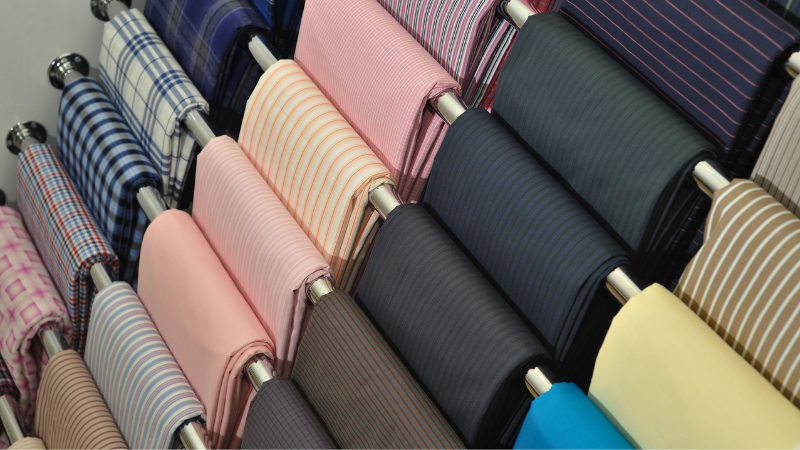
Woven fabrics are produced by crossing two sets of yarns at right angles while using a loom. The production process makes the fabric very durable and suitable for things that are used regularly. Woven fabrics are known for being strong, so they can be used in clothing, furniture and many other industrial products.
Woven textiles are ideal for items that have to last such as workwear and upholstery.
Knitted Textiles

This type of fabric is made by knitting loops in yarn which makes it both comfortable, flexible and easy to stretch. Thanks to the looping method, knitted textile processing can stretch a lot which is why they are ideal for activewear, everyday clothes and sportswear.
Some usual choices are jersey fabric for t-shirts and leggings and rib knit for sweaters. Being stretchy, these fabrics are great for activities such as jogging and going out casually.
Nonwoven Textiles
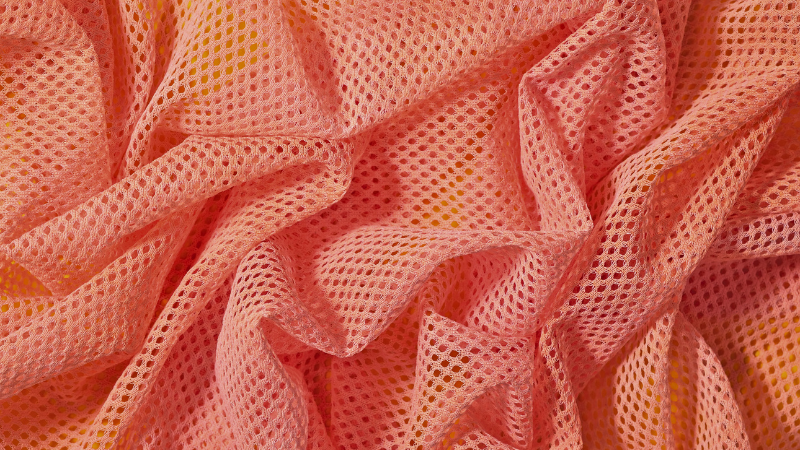
Nonwoven textiles are different from woven or knitted ones because they are created by binding fibers with heat, pressure or adhesives. The result is a fabric that is both light, strong and pocket friendly, which is perfect for things that need strength, but don’t require weaving or knitting.
Surgical gowns, filters and disposable products made from medical textiles are usually made from nonwoven fabrics. You can use felted cloths in crafts, adding interfacing to a nonwoven textile such as jackets limiting textile waste.
What are the Common Textile Materials
Being familiar with different types of textile materials helps you pick the right fabric for every purpose. Here is a list of the most commonly used fibers, what sets them apart and the items they’re usually used to make.
Natural Fibers
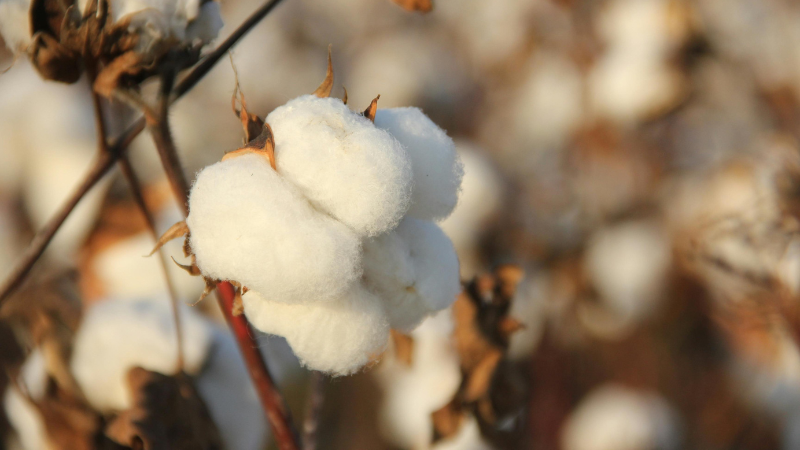
Natural fibers are taken from plants, animals or minerals and people like them for how soft, breathable and luxurious they are. People interested in being comfortable, eco-friendly and purchasing the best textiles will love these fibers.
Cotton
Cotton is known to be one of the most commonly used natural fibers around the world. Due to its softness, the ability to breathe and high capacity to absorb, cotton is very flexible. You can wear it comfortably in any weather since it quickly takes away sweat and keeps you from feeling sweaty.
Most t-shirts, towels, bedding and undergarments are made from cotton, so it is always part of our regular clothing. Cotton fiber is also biodegradable which makes it good for the environment.

Wool
Wool stands out among natural fibers because it keeps people warm and well insulated. It does well in freezing weather since it helps to keep heat inside. Since wool can move moisture away from your skin, it stays warm even if it gets wet which makes it perfect for outdoor clothes and those you wear while being active. Sweaters, coats, blankets and scarves are some of the common uses for wool. This material’s flexibility and toughness allow it to keep its shape for a long time which makes it durable.

Silk
Silk is considered a luxurious fiber that many people look for. Because of its smoothness, shine and strength, silk is a favorite choice for high-end clothes. Evening gowns, scarves and luxury clothes look beautiful when made from this fabric because of its smoothness and breathability.

Flax (Linen)
Linen is valued because it is both light, breathable and very durable. You can wear linen in summer because it’s soft and breathable, which makes it an ideal choice for dresses, blouses and shorts. Linen is preferred for things like tablecloths and bedding since it resists wear well. Linen fiber is both light and tough and it becomes softer and more comfortable every time it is washed.

Synthetic Fibers
They are made up of materials that come from petroleum. They are made to endure more, resist wrinkles and be lightweight. Because of their good performance such as wicking moisture, stretching and drying fast, these fibers are commonly added to sportswear, activewear and outerwear.
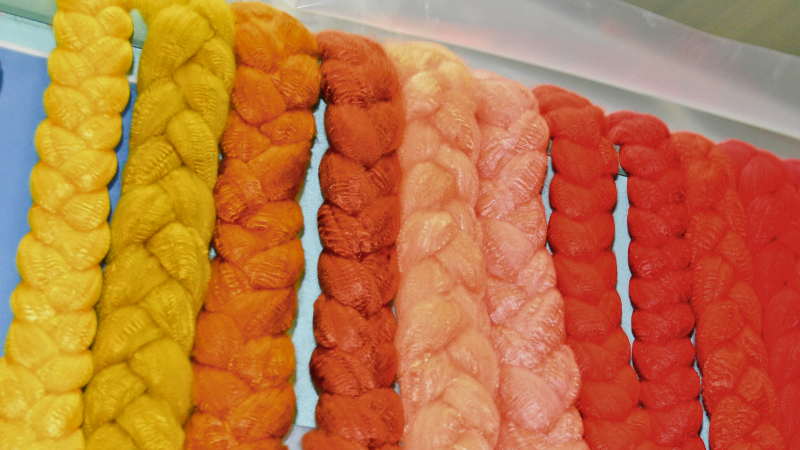
Polyester
Polyester is one of the most popular artificial fibers used everywhere. Thanks to its durability, ability to resist wrinkles and keep moisture away, it is perfect for sportswear and outdoor clothes. Polyester clothes are simple to take care of since they need little ironing and dry fast.

Nylon
Nylon is a man-made fiber that is both sturdy, lightweight and very flexible. Since nylon can stretch, it is perfect for clothing and sports gear.
It is applied to bags, accessories and outdoor things because it is tough and resistant to wear. The qualities of nylon allow it to be used in the production of high-quality consumer textiles.

Acrylic
Because it is soft and warm, acrylic is typically used instead of wool. It gives the same comfort as wool and is much lighter and simpler to take care of. Acrylic fabric is used in sweaters, blankets and costume materials because it gives a soft and comfortable touch.
Even though acrylic isn’t as breathable as wool, it’s still affordable and provides enough warmth without extra weight, which is great for cold weather clothing.

Blended Fabrics
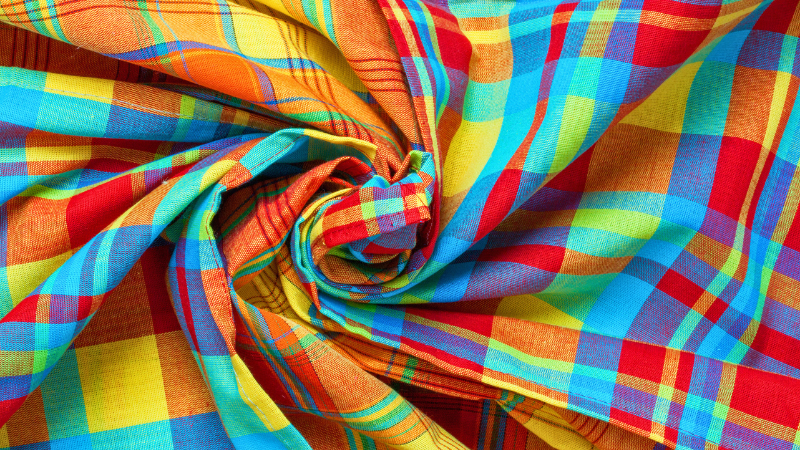
Textiles made from blended fabrics have the advantages of natural and synthetic fabrics. Thanks to their durable, stretchy and comfortable nature such fabrics are perfect for different types of clothing, including workwear, sports and casual outfits.
Cotton-Polyester
When cotton and polyester are blended, you get material that is soft as well as strong and resistant to wrinkles. It is easy to take care of and not too expensive, making the fabric comfortable and useful. Many people use this material in t-shirts, bedding, workwear and home textiles because it gives them the benefits of cotton and polyester.
Spandex
Spandex is a type of fiber that is famous for being very stretchy. Combining spandex with cotton results in materials that feel good, stretch easily and do not lose their form. This type of material is often found in sports clothes, activewear and skin-tight leggings and swimsuits. Thanks to spandex, fabrics are more flexible, making them perfect for people who like to be active.
Everyday Use of Textiles

Textiles are important in almost all areas of our current lives. Whether for clothes or medical purposes, this article will show how textiles are used in everyday situations.
- Apparel: Clothes of all kinds, from every day t-shirts to fancy suits, depend on textiles. Because of fast fashion and sustainable fashion, the textile industry is expanding around the world.
- Home: The home includes upholstery, bedding, curtains and towels made from textiles, giving both beauty and comfort.
- Industrial: Products such as ropes, tents and filters rely on textiles because they give them strength, durability and usefulness.
- Medical: Bandages, hemp plant, surgical gowns and wound dressings in the medical industry are mostly made from textiles for the sake of patient hygiene.
- Technical: Technical textiles are helpful in cars, fire safety gear and sports gear because they offer both safety and high performance.
The History and Evolution of Textile
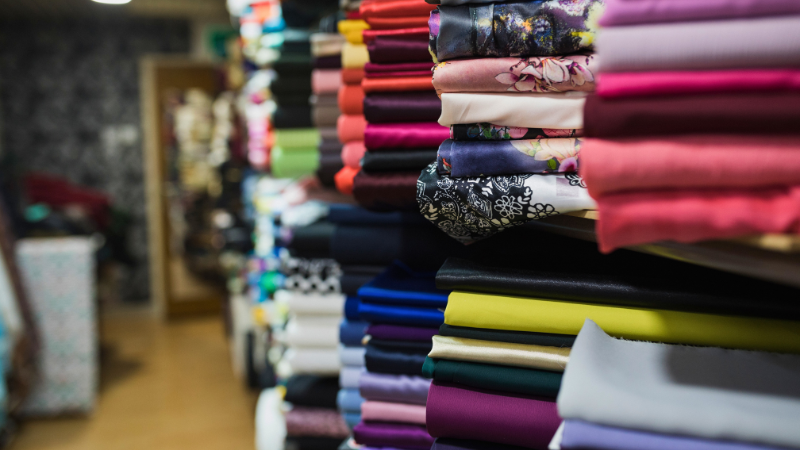
For a very long time, people have relied on textiles for clothing, shelter and conveying their meanings. Flax fibers found in a Georgia cave from 36,000 years ago by archaeologists indicate that earliest textiles were made early in human history.
To start with, people used wool, flax, silk and cotton to make textiles and they used different methods, from the elaborate weaving of the Andeans to the block-printing of India. With the help of innovations such as the spinning jenny, power loom and cotton gin, the Industrial Revolution greatly changed how things were produced and how much was produced.

Because of these changes, textile manufacturing improved which also encouraged major economic adjustments, expanding trade and building up industrial cities. The introduction of rayon and nylon in the 20th century made textiles more available to the public, reduced their cost and added features such as durability and resistance to water.
Nowadays, electronics are being added to fabrics to produce wearable technology for healthcare, sports and the fashion industry. Such innovations as conductive threads and flexible sensors are expected to change the way we use our clothing and the way it interacts with technology.
Final Thoughts: Why Understanding Textiles Matters
Professionals and consumers depend on textiles since they provide comfort, sustainability and durability. They help shape the fashion and engineering fields, so they are important in today’s world. Yanmao Textile Technology CO., LTD is a top provider of fabrics that are both innovative and suitable for many uses.
Being involved with leading international fashion brands, they make sure to care for the environment, control quality and offer unique solutions, on-time shipments and value prices which makes them a trusted choice for fabrics.
Looking to boost your product line with fabrics that are eco-friendly, innovative and last a long time? Get in touch with Yanmao Textile Technology CO., Ltd. to talk about your requirements and see how we can assist you in reaching your business objectives.





